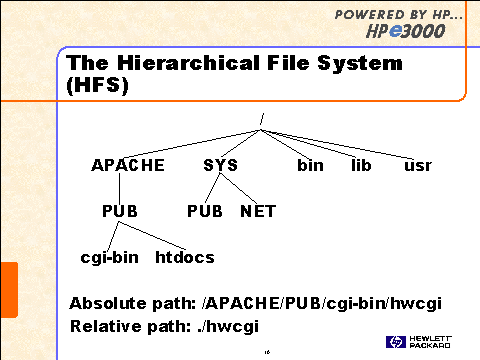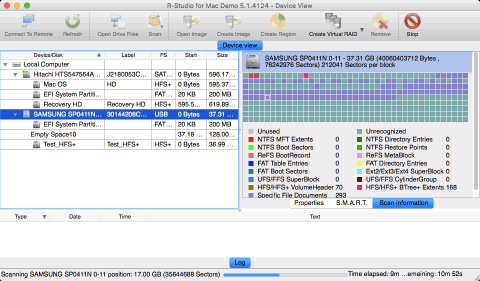

- #Downside of hfs file system mac os
- #Downside of hfs file system drivers
- #Downside of hfs file system update
- #Downside of hfs file system free
Neither Windows or Mac OS has a native ext2 ext3 or ext4 support. ext4 has a maximum file size of 16 terabytes and the maximum volume size of 1 exabyte. In 2008 the ext4 was introduced which is the most modern dedicated Linux file system.
#Downside of hfs file system update
In 1993 an update called Extended File System 2 or ext2 was then released and was for many years the default file system in many Linux distros.īy 2001 ext2 was upgraded to ext3 which introduced journaling to protect against corruption in the event of crashes or power failures. In 1992 the Extended File System or ext was launched specifically for the Linux operating system.
#Downside of hfs file system drivers
Many Linux systems require extra drivers to be installed to access exFAT devices.

It has read and write support on Mac OS and recent versions of Android.

In terms of compatibility, exFAT enjoys wider non-Windows support than NTFS. For this reason exFAT has been adopted by the SD card Association as the default file system for SDXC memory cards. The maximum file size is 16 exabytes or effectively unlimited, which makes exFAT the best choice for formatting memory cards. exFAT is less sophisticated than NTFS but has significant benefits over FAT32. exFATĮxFAT or the extended File Allocation Table was introduced by Microsoft in 2006 as a file system optimized for high-capacity USB flash drives and memory cards. For example, by default NTFS volumes are read-only in Mac OS and in older Linux distros, and may not be readable at all on other devices such as standalone media players. The only real downside of NTFS is a lack of compatibility with older versions of Windows and non-Windows operating systems. For these reasons all modern versions of Windows must be installed on a drive which is NTFS formatted. NTFS also supports file permissions, file encryption and other features that make NTFS more suitable than a FAT32. NTFS is also a journaling file system which means that it maintains a record of changes, so it can recover following a system crash or power failure. It was introduced in 1993 to overcome the limitations of FAT32 and has a file size limit of 16 exabytes (an exabyte is 1 million terabytes, so in practice with no file size constraint). Today the most popular Windows file system is the New Technology File System or NTFS. FAT32 remains a popular filesystem due to its high level of compatibility across operating systems and is still widely used to format USB flash drives, memory cards and some other external storage devices.

For example FAT12 supported a maximum file and volume size of 32 megabytes, meanwhile FAT32 can store individual files up to 4 gigabytes in size and is limited to 32 gigabyte volumes if formatted in Windows, up to 2 terabytes when formatted with other operating systems, and has an absolute maximum volume size of 16 terabytes. Each FAT variant can divide a drive into an increasing number of clusters and supports an increasing maximum file size and volume size. The first Windows file system was known as the File Allocation Table or FAT, with three major variant developed known as FAT12, FAT16 and FAT32.
#Downside of hfs file system free
FAT12, FAT16 and FAT32įile systems divide the storage space on a drive into virtual compartments known as clusters, maintain an index of where individual files are located and of available free space. So what are the differences between file systems and which should you choose. Today there are lots of different file systems in use with the choices available depending on the operating system you’re using and the type of drive your formatting.įor example, in Windows OS if you want to format the SSD you’ll be able to choose between NTFS or exFAT file systems, whereas in Linux if you want to format the USB flash drive the file system options would be fat32 NTFS or ext4. It is applied when you format a drive or partition. File system is a standard for organizing data on a storage device like a hard drive or a solid state drive.


 0 kommentar(er)
0 kommentar(er)
